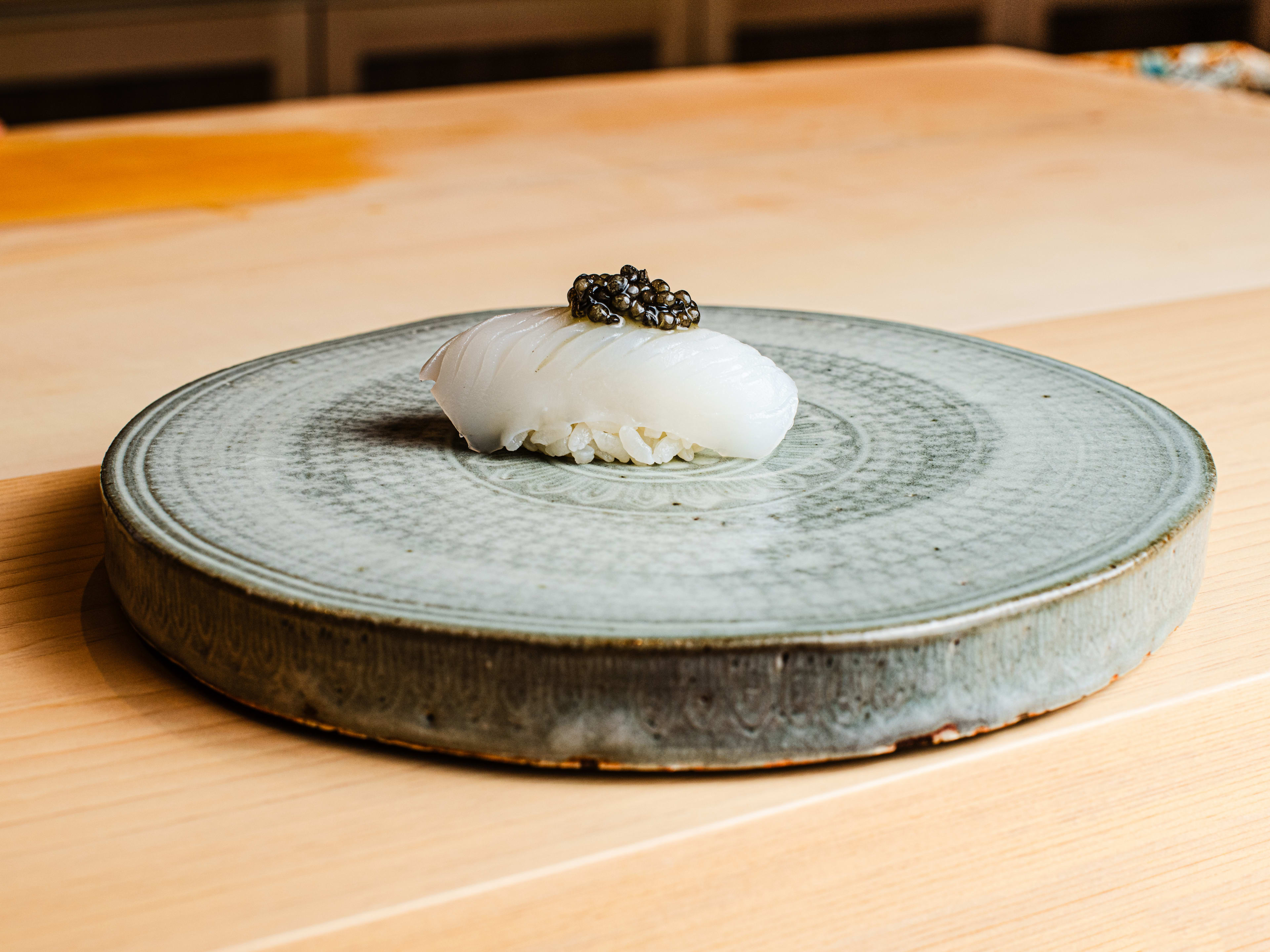LDNReview
The first—and most important thing—you should know about Sushi Kanesaka is that, at £420, it’s London’s most expensive omakase spot. So is it worth it? The short answer: no. If you have a burning passion for delicate cross-hatched scallop and the funds to do it without wincing at the price tag, a meal at this Mayfair spot will feel like a pretty special Thursday night. There's no doubt some of the dishes are exceptional. But the overly tame experience can feel like it drags so if this is a once-in-a-lifetime meal for you, there are other omakase experiences in the city that we love more, for a much lower price point.
In classic Park Lane fashion, it’s not as easy as walking into a restaurant and taking a seat. At Sushi Kanesaka, your entrance—like your meal—is done in purposeful stages. The short wait in the Dorchester hotel bar builds anticipation, and the noren part ways to a tight corridor that leads to what feels like a secret meeting room. Taking one of the 13 seats gives the same feeling of excitement as getting strapped into a theme park ride. And you’ll want to get comfortable, because this will take a while.
photo credit: Aleksandra Boruch
photo credit: Aleksandra Boruch
photo credit: Aleksandra Boruch
photo credit: Aleksandra Boruch
photo credit: Aleksandra Boruch
The minimalist room is mostly silent and the atmosphere flat throughout the meal, except for the occasional murmur of appreciation, or a giddy diner dropping the fact they lived in Japan for six years. A little more interaction from the chefs could go a long way. Yes, you’re told what type of fish is on the nigiri as it's being passed to you, and given the occasional fun fact about the eel being prepared edomae-style—which means it’s grilled, steamed, and grilled again. But at times, during the silent pauses, we were checking the time and wondering when it would be over.
photo credit: Aleksandra Boruch
photo credit: Aleksandra Boruch
photo credit: Aleksandra Boruch
photo credit: Aleksandra Boruch
photo credit: Aleksandra Boruch
The fish is undoubtedly excellent quality, and things like hata nigiri made us question how grouper could be so soft and sweet. We tasted fruits so incredible that we couldn’t believe it was the Japanese melon’s natural juices and not syrup. But there were a few misses: the mackerel nigiri, for example, doesn’t measure up to the rest of the menu. Although seasoned with shiso leaf and Japanese chives, there wasn’t a good balance of flavours, and the fish was much too overpowering. The abalone was unpleasantly chewy, and we had to load up on an entire little bowl of—admittedly phenomenal—ginger to erase the lingering taste.
photo credit: Aleksandra Boruch
photo credit: Aleksandra Boruch
photo credit: Aleksandra Boruch
photo credit: Aleksandra Boruch
photo credit: Aleksandra Boruch
Food aside, at a spot this expensive, your fellow diners also play a part in how the two hours will go. On a lucky day we’ve compared notes on the squid with a solo neighbour, and on another we’ve been the unwitting eavesdroppers to a pampered 12 year-old say “This is better than the yellowtail we had in LA, papa”. So despite the beautifully prepared fish, if we were putting down our own money, we’d go elsewhere—maybe even to Japan. Yes, we’ve found flights to Tokyo that are cheaper than this meal.
Food Rundown
photo credit: Aleksandra Boruch
Omakase
The 20-course meal here usually starts with chawanmushi—an egg custard filled with things like tender scallop and topped with crab—before moving onto grilled kobe or perfectly cooked tuna steak that’s seasoned only with wasabi. After that, it’s course after course of excellently sliced, lovingly prepared nigiri. Depending on where you’re seated, you’ll watch longingly as others eat before, or you’ll feel serious FOMO when you watch someone bite into their grilled eel hand roll long after you're done—wishing you could have it again.
The meal rises and dips. You’ll go from eating one of the best chutoro nigiri of your life, to being underwhelmed by a slightly acidic kinmedai, only to be mind-blown once again by an incredible dessert. If you’re lucky enough to get the daifuku—freshly made mochi—you’ll leave on a high.
